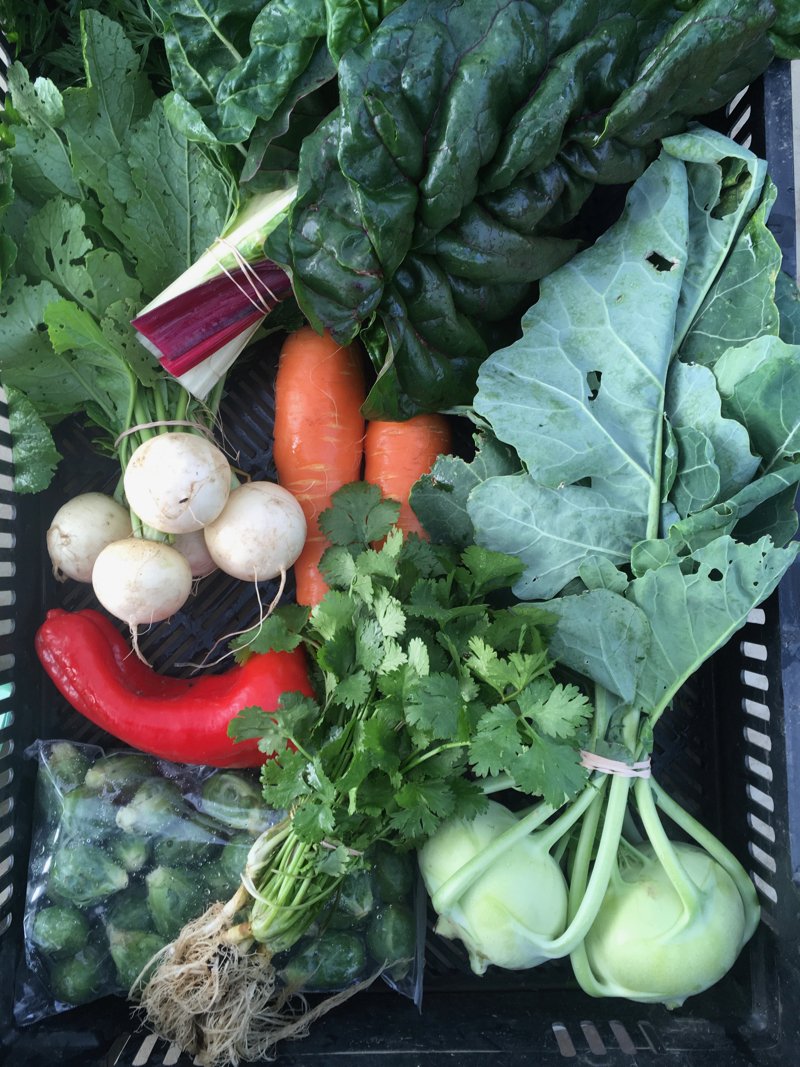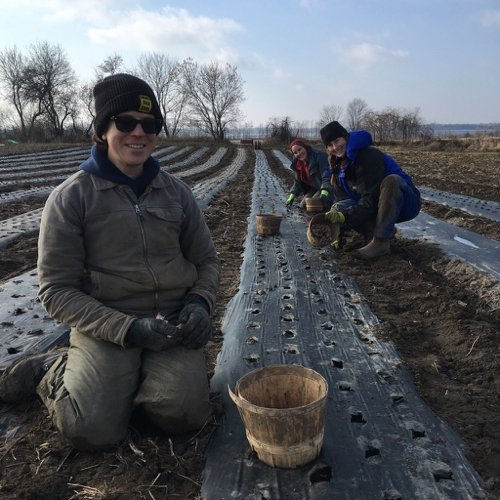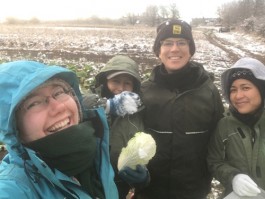It was a huge relief Thursday evening when we got the last of our Napa Cabbages safe into storage despite the snowy conditions. These little "happenings" are my primary way to say hi as we go throughout the season, so don't be shy to click the read more at the bottom. Here's the story of our fall harvests and how we store veggies through the winter with our suggestions for how you should store them too!
It has been a nice gentle fall, with temperatures lowering gradually. We've been busy jumping from one crop to another over the past two weeks to get all our big harvests in. The carrots we were able to pull in just before the big rains a couple weeks ago (which limit the tractor's capacity to dig them) so we pulled the last of them by the tractor headlights before the rains started to fall. The Napa was our last main storage crop to bring in before the "hard" freeze, or when temperatures hit -5C and stay below zero.
Have you noticed that plants growing around you don't all die at the same time in fall? Some wilt at the first hit of frost like zucchini, others can pop back a few times, and if there's any Kale growing in a garden nearby you'll see they're quite happy well into winter! It's always interesting in fall standing in our fields of green, looking around at the neighbouring hayfields all brown. As a small farm, we take advantage of all the different frost hardy plants we can. By learning which plants survive gentle frosts, we're able to keep greens coming in from the garden much longer than you might expect!
This month we're excited to have a whole number of greens available for you, there's cilantro, hakuri, lettuce, kale and kalettes to go all around. We also have a number of other greens that will be shared amongst you randomly thanks to Harvie, based on preferences: Bok Choy, Broccoli, Chard, Cilantro, Fennel, Radicchio, and Spinach. That means your box will be filled with the items you like best first, and we fill the boxes in a random order each month so that someone whose name starts with A isn't always the first to get items in short supply ;) Anything you've listed as love it you will get before an item that you've ranked lower. The little "extras" images at the bottom of your e-mail are a handy way to check out what might be available by swapping too without needing to log in.
Once you get your veggies, how should you store them? Generally everything we send you can go in the fridge. Notable exceptions are winter squashes and sweet potatoes which will prefer stay on the counter. Items in paper bags like onions and potatoes are best in the fridge, but if you're tight on space a cool spot (5-10C) is ok too. We're making a big push here at the farm to reduce plastic waste, and so we're packing as little as possible in those pesky little bags. This winter we're adopting a policy of 5... if there's less than 5 of a vegetable, for example beets, we aren't putting them in a bag. While we don't expect you to fish 20 tiny items out of your box, we figured 5 was a good compromise. Instead, we're providing you each with one nice big bag to hold all your vegetables in your fridge. It's re-useable (washable) and breathable (comes with little holes in it) which was our way of storing vegetables here at the farm for many years. It works great as it prevents the vegetables from getting too moist or too dry, the two enemies of vegetable storage. While crisper drawers can work, it really depends on the fridge. This way you can tuck everything in your bag and when it's time to cook, you can just pull the whole bag out and rummage through for inspiration! It's also clear... which we find is huge when it comes to seeing things and not forgetting about them in the fridge. We just fold over the top of the bag to tuck it closed. Harvie has also put together a more detailed list, but this simple approach works great for us.
Enjoy, Heather




